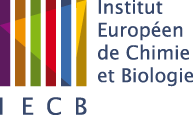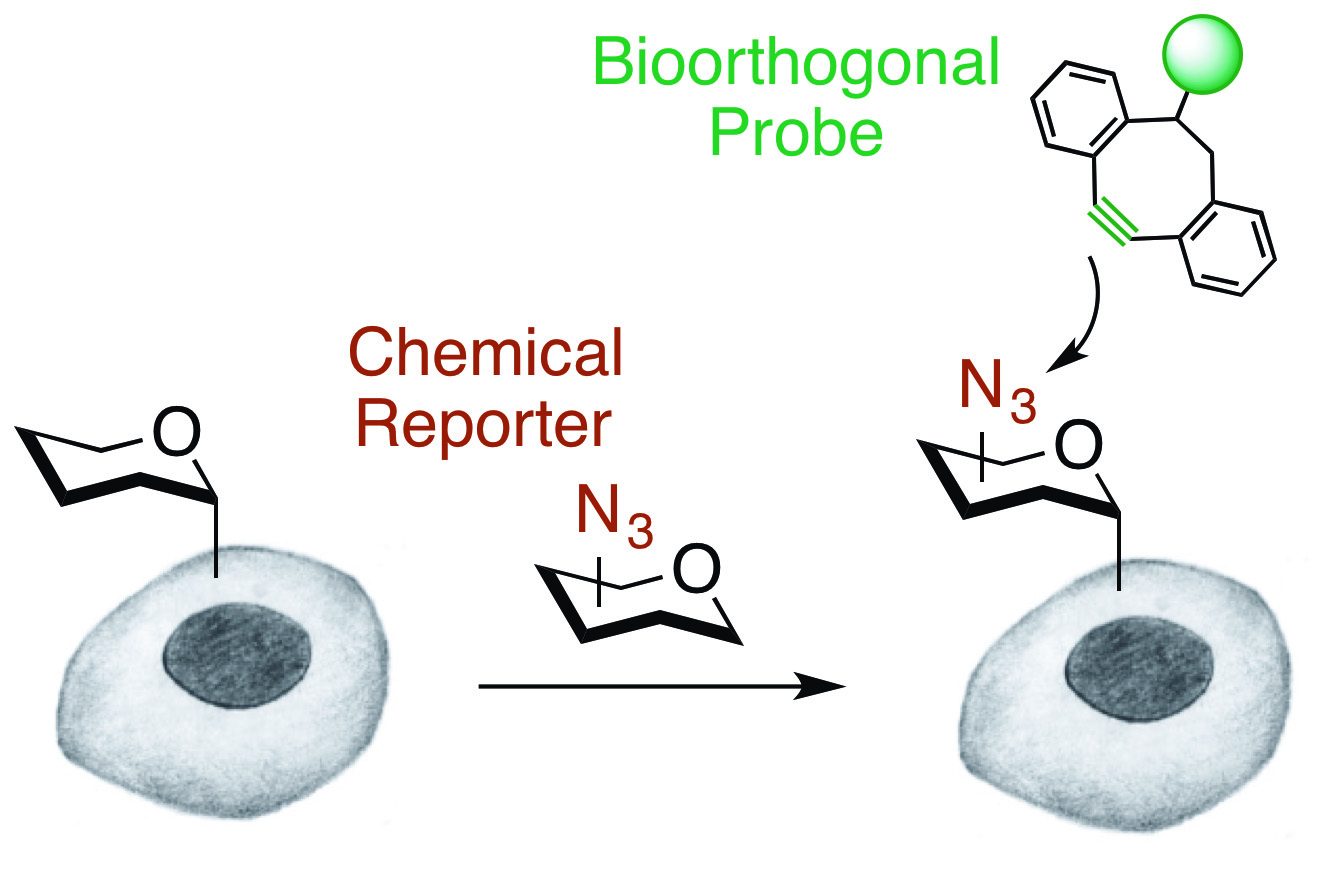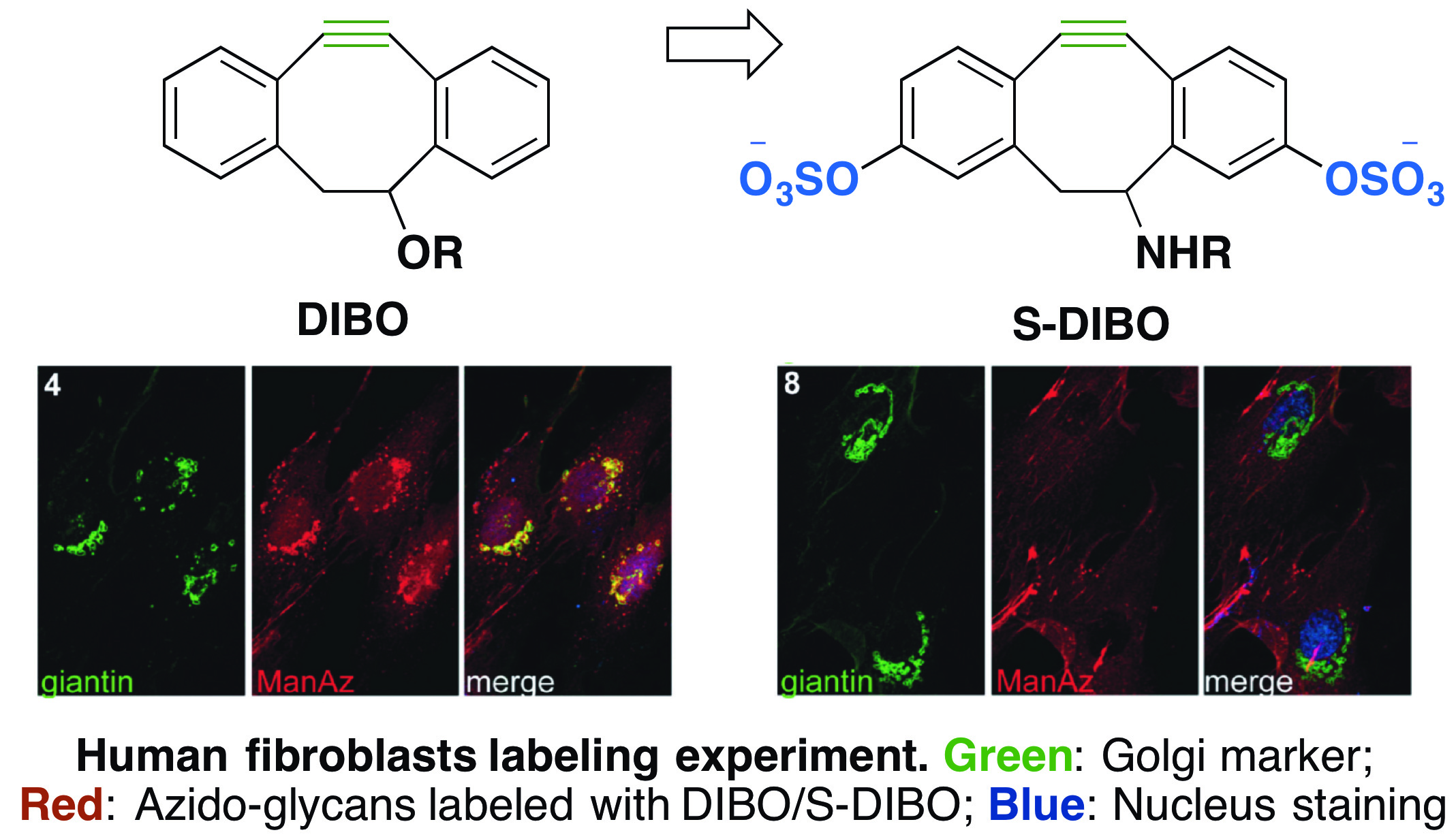| Chemical Neuroglycobiology |
|
Junior Chair of Excellence, INCIA, CNRS/Université de Bordeaux (UMR5287) Cette adresse email est protégée contre les robots des spammeurs, vous devez activer Javascript pour la voir. Tel: +33(0) 5 40 00 33 71
Fr√©d√©ric Friscourt received his PhD from the University of Glasgow, UK in 2009, under the guidance of Prof. Pavel Końćovsk√Ĺ, on the development of novel chiral ligands for enantioselective catalysis. He then joined the group of Prof. Geert-Jan Boons at the Complex Carbohydrate Research Center, GA, USA, as a post-doctoral research associate (2009-2014) in order to transition to chemical biology research. There, he became involved in the design and synthesis of bioorthogonal probes for imaging the glycome. Keywords / Expertise / Techniques
Glycans; Neurobiology; Chemical probes; Imaging; Click Chemistry; Organic synthesis; Biochemistry SummaryGlycans are chains of monosaccharides that are covalently linked to cell surface proteins and lipids. They have been recognized as key participants in cell-cell communications and for instance, in the brain, are crucial mediators in neurite outgrowth, synapse formation and plasticity. From a pathological point of view, changes in the neuro-glycome of cells are associated with developmental disorders, can mark the onset of glioma and neuro-inflammation. Despite these intriguing observations, the molecular mechanisms by which these complex carbohydrates influence neural cells are not well understood due to a lack of suitable biochemical methods. We aim at unravelling the functional roles of glycans in the nervous system by exploiting organic chemistry to develop novel tools that can probe glycans in the brain. Activity reportImaging glycans: a daunting task. Although protein tracking in living cells has become routine experiments in cell biology laboratories thanks to the utilization of genetic reporters (i.e., fusion proteins such as GFP), glycans are, unfortunately, not amenable to these imaging techniques, as they are not directly encoded in the genome. Instead, complex glycans are the results of stepwise additions and abstractions of monosaccharides by various enzymes such as glycosyltransferases and glycosidases. Previous efforts towards glycans imaging have been relying on the use of lectins (glycan-binding proteins) and monoclonal antibodies (mAbs). While, lectins have been used extensively for the detection of both monosaccharides and oligosaccharides, they typically have low affinity for their glycan epitopes. mAbs are viable options but due to their high molecular weight, they are often too large to cross the blood-brain barrier, significantly limiting their utilization for non-invasive in vivo brain imaging.
To address these difficulties, we have developed two novel dibenzocyclooctynes: 1) a highly polar O-sulphated-dibenzocyclooctyne (S-DIBO) and 2) a fluorogenic cyclooctyne (Fl-DIBO) that generate strongly fluorescent labeled products. S-DIBO: the first water soluble cyclooctyne probe. Sulfate esters of phenols have excellent stabilities under moderately acidic and basic conditions and are found in nature as post-translational modifications of tyrosine. Consequently, we designed an efficient synthetic route for introducing O-sulfate functionalities onto the aromatic rings of the parent dibenzocyclooctyne probe (DIBO). The novel highly polar sulfated dibenzocyclooctynylamide probe (S-DIBO) (J. Am. Chem. Soc. 2012) was found to be fully soluble in aqueous medium, making its utilization optimum for biological applications. While employing biotinylated S-DIBO for the labeling of azido-containing glycoconjugates in living cells, we uncovered that the substitution pattern of the dibenzylcyclooctyne probes can strongly influence their subcellular location. In particular, using an elegant confocal microscopic study, we showed that DIBO can enter cells, thereby labeling intra- and extracellular azido-modified glycoconjugates, whereas S-DIBO cannot pass the cell membrane and therefore is ideally suited for selective labeling of cell surface molecules.
Fl-DIBO: a fluorogenic cyclooctyne probe. Due to the slow rates of strain-promoted alkyne-azide cycloadditions, large amount of probes is often required to achieve sufficient labeling of azido-glycans in living cells. Consequently, probe washouts are necessary for increasing the signal to background ratio. Fluorogenic bioorthogonal reactions, in which non- or weakly fluorescent reagents produce highly fluorescent products, offer therefore the unique opportunity to label biomolecules without the need for probe washout. We have recently developed a fluorogenic cyclooctyne Fl-DIBO (J. Am. Chem. Soc. 2012), which upon reaction with an azide, can produce a cycloaddition product that is more than 1000-fold brighter compared to the unreacted reagent. Interestingly, where cycloadditions of Fl-DIBO with other dipoles such as nitrones, nitrile oxides or di-substituted diazo reagents mostly generate quenched cycloadducts, reactions of mono-substituted diazo compounds with Fl-DIBO give highly fluorescent 1H-pyrazoles (10,000 times brighter than Fl-DIBO) (Chem. Eur. J 2015).√ā¬†
Selected publications
Research team
|
2, Rue Robert Escarpit - 33607 PESSAC - France
Tel. : +33 (5) 40 00 30 38 - Fax. : +33 (5) 40 00 30 68







